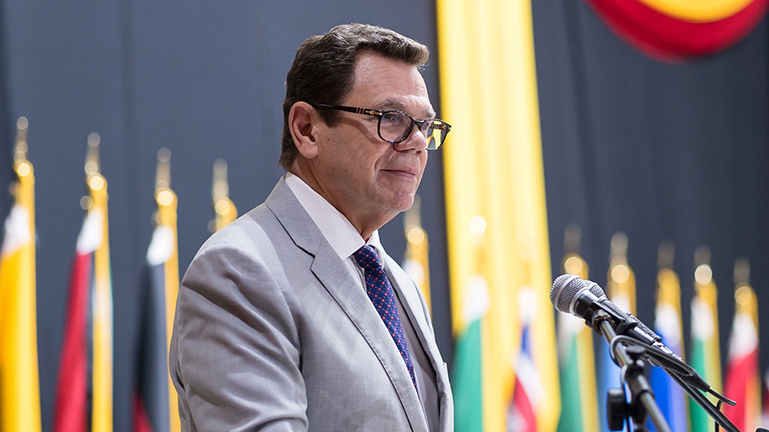Guyana’s 2015 oil find and more specifically the country’s anticipated 120,000 barrels per day production is expected to be the main driver behind the Caribbean Development Bank’s (CDB) projected regional GDP growth of 4.1% for 2020, the Bank’s President Dr Warren Smith declared at a press conference in Barbados on Tuesday.
The announcement by the CDB President in Barbados coincided with the public disclosure by the Director of the local Department of Energy, Dr Mark Bynoe, that Guyana was on the verge of accessing its first million barrels of oil from the Liza Field in the oil-rich Stabroek Block.
The attention of the CDB and the region as a whole has shifted to the prospects which Guyana’s oil & gas sector now holds for playing a critical role in the growth of the Bank’s profile as a key driver of economic development in the region.

“With estimated daily production of about 100,000 barrels of oil, Guyana should dominate regional growth performance. Other growth drivers in the region should be the construction, tourism and agriculture sectors,” Smith told the Bank’s customary annual media briefing.
While the anticipated impact of Guyana’s oil recovery and export, which is already underway, has been tagged by the Bank as the likely main driver behind the projected economic growth levels in the region this year, the Bank’s president also said that that growth was likely to remain lopsided and, as well, not likely to reach the sustainable rates required to create a condition of longer-term resilience in the regional economy. Smith named some of the Bank’s borrowing member countries including Barbados, Grenada, Jamaica and St Kitts-Nevis as being among those territories that must stay on course with their socio-economic reform programmes while other regional economies “should join the bandwagon and commence, with alacrity, implementation of their own adjustment programmes” if the Bank’s overall growth projections are to be sustained.
Last year, Anguilla and Dominica, with their growth rates of 10.9% and 5.7%, respectively, led the region, according to the CDB President, while the double digit growth in visitor arrivals in St. Kitts-Nevis and the Cayman Islands highlighted an all-round improvement in the tourism sector in nearly all of the Bank’s borrowing member countries.
Back in March last year the CDB had tagged its anticipated sharp increase in Guyana’s economic growth to the country’s oil recovery pursuits though it had said that those prospects also hinged on ending what is described as the political uncertainty arising out of the outcome of the late 2018 no confidence vote in the National Assembly and the legal and political episodes that had led to the setting of March 2 this year as the date for general elections to bring the impasse to an end.
In 2018 the Bank had, in its report, also alluded to the danger that “oil production could dominate exports and lead to exchange rate appreciation, which in turn could harm the competitiveness of other sectors.”
Last year, the Bank’s collaborative financing pursuits with the United Kingdom/Caribbean Infrastructure Partnership Fund (UKCIF) realized a 16.7 million pounds sterling grant to Jamaica for its high-profile Southern Plains Agricultural Development Project aimed at helping Jamaican farmers enhance productivity and secure enhanced market access.






